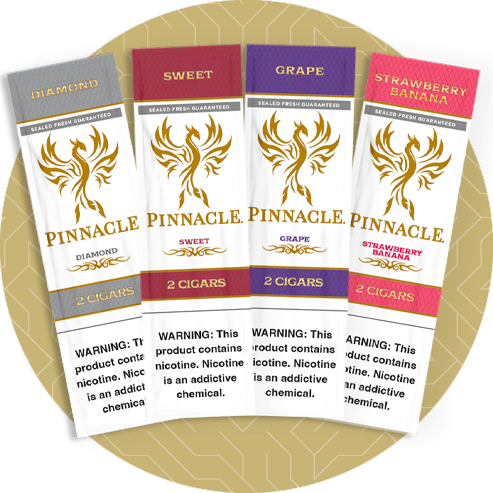
Pinnacle Cigarillos
Pinnacle Cigarillos are a bold expression of craftsmanship and character—crafted for those who appreciate the finer moments in life. Each cigarillo is wrapped in a smooth, high-quality leaf and filled with a rich, aromatic blend of premium tobaccos, delivering a consistently mellow draw and a satisfying, slow burn. Whether you’re unwinding after a long day or savoring a moment of pause, Pinnacle Cigarillos elevate the everyday with refined flavor and undeniable style. Available in a variety of distinctive blends, Pinnacle is where tradition meets modern indulgence.

